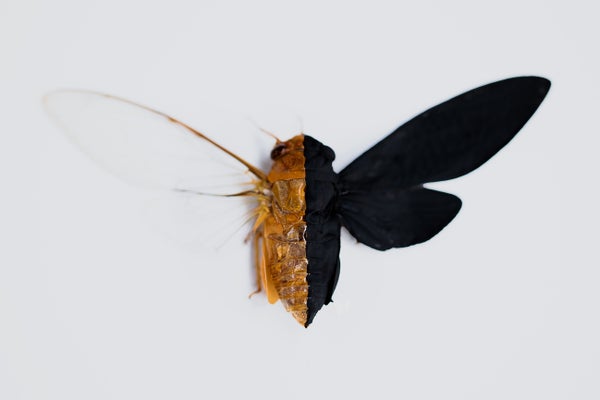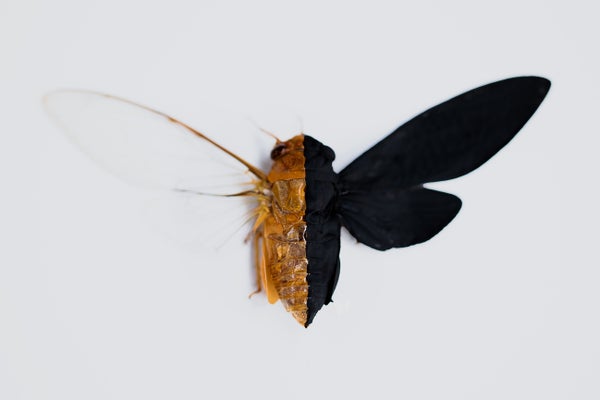October 31, 2024
2 min read
The Universe in 100 Colors Provides a Stunning Tour through Science
A science photo book probes the colors we can see—and even “forbidden” colors we can’t

A simulation of Vantablack on half of a cicada.
Tyler Thrasher; From The Universe in 100 Colors, by Tyler Thrasher and Terry Mudge (Sasquatch Books, 2024)
Humanity is lucky to reside on a planet circling a star with plentiful radiation, illuminating the world around us in reflected wavelengths of light. These wavelengths—a portion of which we experience as color—have long warned us of danger and enticed us to closely inspect the objects we encounter.
In a new photo book, The Universe in 100 Colors, science enthusiasts Tyler Thrasher and Terry Mudge take readers on a tour of color across scientific disciplines—from things most people will never see in day-to-day life (such as the black color of the brain’s dopamine precursors, a lack of which can lead to Parkinson’s disease) to ubiquitous backdrops (for instance, the green porcelain that gives chalkboards their color). Some are fanciful: the drab color routinely used to paint rental apartments is called “landlord white,” for example. Still others are profound—such as the peachy orange that would have been the universe’s first visible color if humans had been around to see it.
“It’s a story of light and all the creative paths that it can take in its journey to your eyeball,” says Mudge, who curates a science subscription box called Matter. And then there are the paths it can’t take: one section of the book details views our visual systems can’t naturally perceive, including the “forbidden” colors you’d get by processing red and green wavelengths simultaneously.
On supporting science journalism
If you’re enjoying this article, consider supporting our award-winning journalism by subscribing. By purchasing a subscription you are helping to ensure the future of impactful stories about the discoveries and ideas shaping our world today.
Above you can see a simulation of Vantablack, a paint containing tiny carbon nanotubes that squirrel away 99.6 percent of the light that touches them, removing details of shape and shadow and rendering 3D objects into indistinct blobs. The paint was invented by a materials scientist but exclusively licensed to a particular artist, so it’s “forbidden” in a much more prosaic way—one reason the book’s authors had to digitally edit the cicada pictured here to demonstrate the effect themselves.
In art and science, “the goal of both is to make observations about the world around us and communicate something,” says Thrasher, who describes himself as a “mad scientist artist.” And “when you combine the two, when you start to bring creative expression to science, I think you get closer to what a lot of people call alchemy.”

